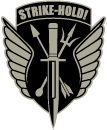“On yer bike” Part 1: Swiss ‘Condor’ M95
In our modern, hi-tech age, the humble bicycle, or “human powered vehicle” (HPV) in modern US Army parlance, is often over-looked as an enhancer of battlefield mobility – and thereby a tactical force multiplier. However, bicycles have been used successfully in military applications ever since the first practical ones became available about 100 years ago.
Bicycles are relatively cheap to buy, easy to support and maintain (as they require neither feed nor fuel) and function virtually silently. Bicycles can also operate across a much wider range of terrain and roads, paths and byways than motorised vehicles. Plus, on a weight-to-load ratio, they can also often carry heavier payloads.
WWII was probably the heyday of the bicycle’s use in military applications. As the emphasis in war-fighting had shifted to speed, surprise and mobility, many nations and fighting units recognised the advantages of the bicycle.
A few quick examples are:
- The Japanese Army used bicycle-borne light infantry to swoop down the Malay peninsula and capture Singapore through the back-door
- The German Blitzkrieg was successful because bicycle-borne troops provided the wood of the shaft behind the armoured and motorised forces spearhead
- The Dutch Army made wide use of bicycle-borne troops during their heroic defence against the German Blitzkrieg
- British airborne commandos used bicycles in order to move faster during the Bruneval radar station raid; a folding bicycle even became a standard piece of kit for British Airborne forces in WWII – the famous “Type G Apparatus”
- Chinese guerrillas used bicycles to strike swiftly at Japanese supply lines
- The Volkssturm and Hitler-Jugend also made use of mobile Panzerfaust-equipped tank-buster bicycle units in their last-ditch defence of Berlin
British Airborne Forces folding bicycle (photos courtesy of www.6th-airborne.org): 


During the colonial wars of the ‘60’s the bicycle was effectively employed by both sides to move men and material – but perhaps most extensively by the Viet Minh and North Vietnamese Army.
Moving up to more modern times, the most wide-spread (and famous) use of bicycles by any nation or force were the Bicycle Grenadiers of the Swiss Army – disbanded in 2003, after 100 years of proud service: http://news.bbc.co.uk/1/hi/world/europe/1325485.stm. The Swiss bicycle troops were used for special ops matched to the bicycles tactical advantages: quick-strike (Handstreich) operations (with an emphasis on speed, mobility and silence), urban warfare (with an emphasis on mobility, rapid-deployment and load-carrying capacity), and close-terrain combat (with an emphasis on rapid-deployment, mobility and a small logistical footprint). 
For a full analysis of the Swiss bicycle forces, see Captain Kevin Stringer’s excellent article “Bicycle Infantry: The Swiss Experience” from the Sept-Oct 1994 issue of Infantry magazine, replicated on the 1st Tactical Studies Group (Airborne) webpage: http://www.combatreform.com/atb.htm
Cycle-borne Finnish Jaeger troops gearing up for a patrol:

Further reading:
1st Tactical Studies Group (Airborne), “Light Bicycle Infantry” archive: http://www.combatreform.com/atb.htm *Highly Recommended*
“Bicycle” magazine video report about Swiss Light Bicycle Infantry: http://www.youtube.com/watch?v=FkjpDZ1O4C0
WWII British Airborne Folding Bicycle: http://www.6th-airborne.org/index.html (click on “Gear” tab)
Finnish bicycle troops in WWII: http://www.kevos4.com/Wartime%20Photos%207.htm
About this entry
You’re currently reading ““On yer bike” Part 1: Swiss ‘Condor’ M95,” an entry on Strike - Hold!
- Published:
- 25/08/2008 / 19:37
- Category:
- Battlefield Mobility
- Tags:

1 Comment
Jump to comment form | comment rss [?] | trackback uri [?]